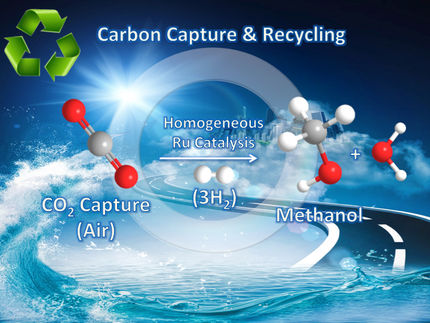Ethylene production via sunlight opens door to future
Advertisement
Here's the future of ethylene production as Dr. Jianping Yu sees it: "We envision some farms in the field that cover many acres. We will have cyanobacteria harvesting sunlight and C02 and then produce ethylene or ethylene derivatives," said Yu, a research scientist in the Photobiology Group at the Energy Department's National renewable energy Laboratory. "That's pretty far from where we are now, but that's the goal. If things work out, 10 years from now we should see some farms making petrochemical replacements."
In much less time, Yu will learn in November whether his research will be named winner of an R&D 100 award. Yu already has proved a certain cyanobacterium can be genetically engineered to produce ethylene.
Currently made most often from petroleum and natural gas, ethylene is used in the manufacture of plastics and polyester, and ranks as the largest petrochemical produced by volume around the world. But the process of making ethylene requires considerable amounts of energy and releases carbon dioxide into the atmosphere.
Researchers in Japan in the late 1990s discovered a blue-green alga, Synechococcus sp. PCC 7942, could be modified to produce ethylene via photosynthesis by the introduction of the gene that codes for an ethylene-forming enzyme, or EFE. But that strain ran into problems as the amount of ethylene produced declined over time and by the fourth generation of the cyanobacterium production stopped entirely.
Building on that research, Yu turned his attention to a different cyanobacterium, Synechocystis sp. PCC 6803. Yu, who joined NREL in 2005, earned his doctorate from Michigan State University for his research into that strain.
Yu's research showed ethylene could be made directly and continuously from cyanobacterium. Normally, algae convert carbon dioxide during photosynthesis into biomass or sugars. But Yu's method redirected the cyanobacterium to use a portion of the CO2 to produce ethylene. Ethylene rises to fill the headspace of a sealed glass tube or photobioreactor and can be easily captured. Since his initial discovery in 2010, Yu has managed to increase the amount of ethylene produced in the laboratory by more than a thousand-fold, to 35 milligrams per liter per hour. His goal is to reach 50 milligrams by the end of the year.
"The strain has been improved so much that at least 10 percent of fixed carbon has become ethylene," Yu said. "Maybe more. We demonstrate 10 percent. We do have newer strains that we haven't analyzed yet."
Perhaps even more importantly, Yu has been able to keep the cyanobacterium producing ethylene even as the organism itself continues to grow.
"There's an observation that despite the amount of CO2 the organism is turning into ethylene, which is substantial compared to the amount that it's turning into cells, there's no impact on the growth rate of the organism," said Philip Pienkos, principal manager of the Bioprocess R&D Group in NREL's National Bioenergy Center. "There are inherent inefficiencies in photosynthesis that limit the growth rate of any photosynthetic organism. But this bug is able to crank out a lot of product in addition to biomass. It's making ethylene and it doesn't affect its ability to grow. It's somehow correcting or overcoming some of that inherent inefficiency in photosynthesis.





























































